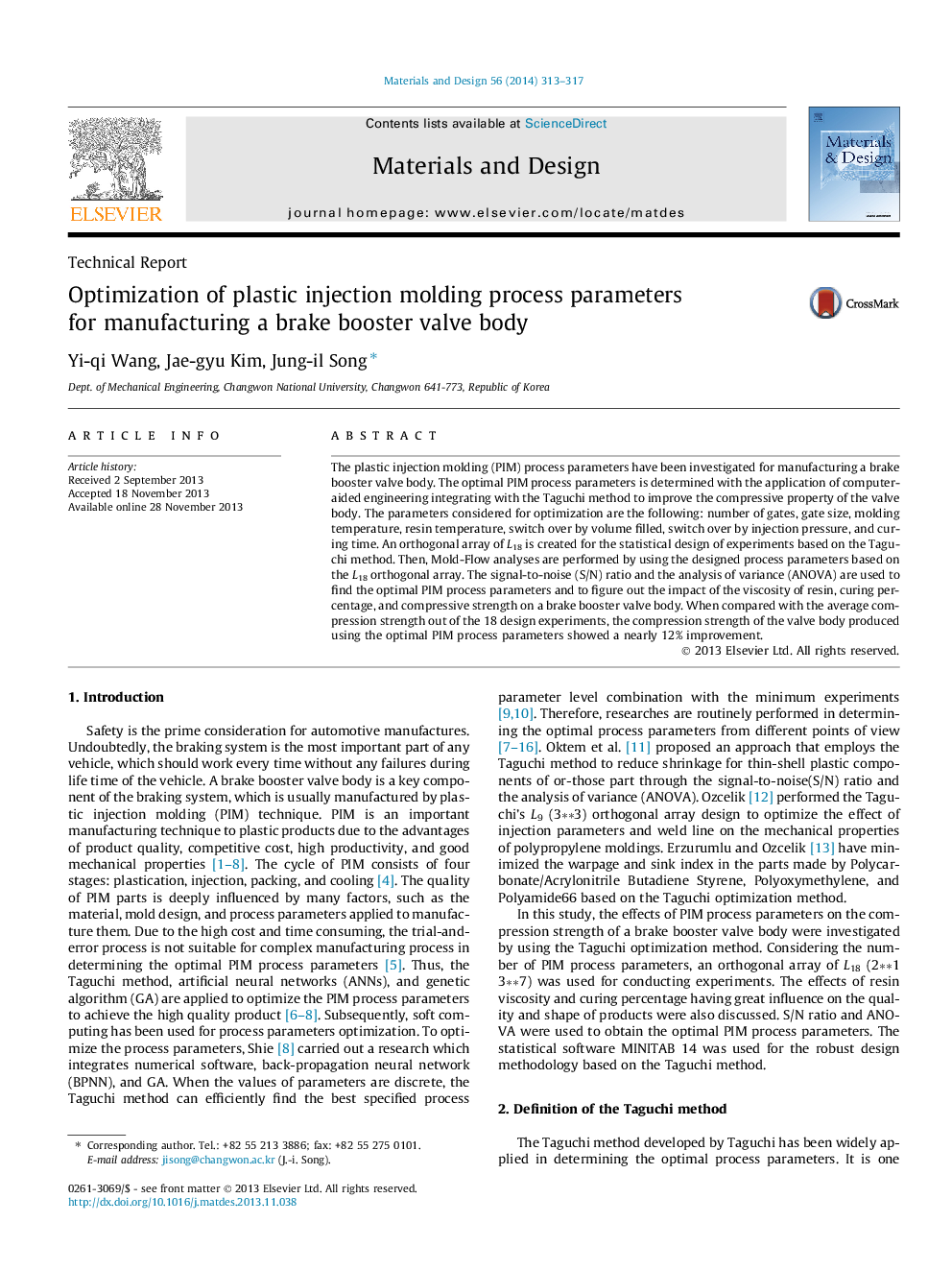| کد مقاله | کد نشریه | سال انتشار | مقاله انگلیسی | نسخه تمام متن |
|---|---|---|---|---|
| 829445 | 1470341 | 2014 | 5 صفحه PDF | دانلود رایگان |
• PIM process parameters have been optimized for a brake booster valve body.
• The Taguchi method and computer-aided engineering have been integrated and used.
• Seven key parameters of PIM process have been considered.
• A nearly 12% improvement have been found by using the optimal PIM process parameters.
• The efficient improvement can improve the safety performance of a vehicle.
The plastic injection molding (PIM) process parameters have been investigated for manufacturing a brake booster valve body. The optimal PIM process parameters is determined with the application of computer-aided engineering integrating with the Taguchi method to improve the compressive property of the valve body. The parameters considered for optimization are the following: number of gates, gate size, molding temperature, resin temperature, switch over by volume filled, switch over by injection pressure, and curing time. An orthogonal array of L18 is created for the statistical design of experiments based on the Taguchi method. Then, Mold-Flow analyses are performed by using the designed process parameters based on the L18 orthogonal array. The signal-to-noise (S/N) ratio and the analysis of variance (ANOVA) are used to find the optimal PIM process parameters and to figure out the impact of the viscosity of resin, curing percentage, and compressive strength on a brake booster valve body. When compared with the average compression strength out of the 18 design experiments, the compression strength of the valve body produced using the optimal PIM process parameters showed a nearly 12% improvement.
Journal: Materials & Design - Volume 56, April 2014, Pages 313–317
